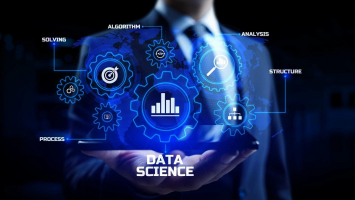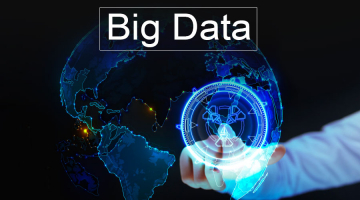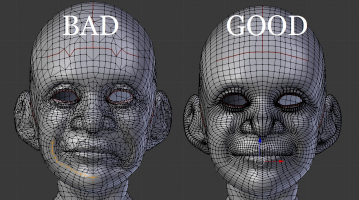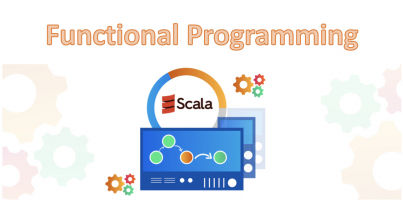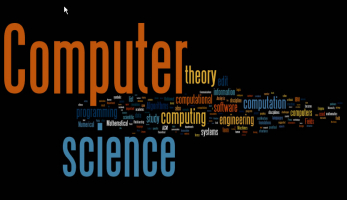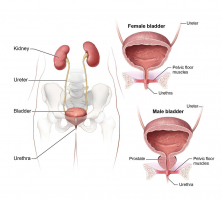Top 10 Best Books On Data Mining
There is an abundance of data all around us. Data, both organized and unstructured, can be used to transform corporate decisions and improve data-driven ... read more...decision making. Data Mining is the art and science of reviewing and evaluating this data. It may be used to uncover patterns and correlations hidden in massive amounts of data. Understanding any data-related work field begins with learning Data Mining. You must learn to extract meaningful facts from a sea of unorganized data. To assist you, here is a list of the best books on data mining that will undoubtedly be a valuable addition to your Data Science reading materials.
-
Walter Shields is the founder and CEO of DataDecided, a Tableau-based data visualization firm, and SQL Training Wheels, a SQL training firm. He has previously worked for Target, the New York City Transit Authority, Ropes & Gray LLP, and Anthem.
Are you a developer looking to broaden your knowledge of database management? Are you a project manager who wants to better understand the demands of your development team? A decision-maker who requires more in-depth data-driven analysis? These pages contain everything you need to know!
Because big data is so prevalent, there is a greater than ever requirement to warehouse, access, and comprehend the contents of enormous databases quickly and efficiently. SQL comes into play here. SQL is the workhorse computer language that serves as the foundation for modern data administration and analysis.
Any database administration specialist will tell you that, despite the passing of popular data management languages, SQL remains the most commonly used and trustworthy to date, with no signs of abating. Walter Shields, an experienced mentor and SQL specialist, relies on his substantial knowledge in this thorough guide to make the topic of relational database management approachable, easy to understand, and extremely actionable.
SQL QuickStart Guide is great for those hoping to improve their employment prospects and professions, developers looking to boost their programming talents, or anyone who wants to take advantage of our unavoidably data-driven future—even if they have no prior coding knowledge!
The SQL QuickStart Guide is Ideal For:
- Professionals who want to improve their professional abilities in order to prepare for a data-driven future
- Job seekers who wish to beef up their abilities and resume in order to gain a competitive advantage in the job market.
- Newcomers with no prior experience
- Managers, decision-makers, and business owners interested in managing data-driven business insights
- Developers seeking to broaden their expertise beyond the whole stack
You'll learn the following in the SQL QuickStart Guide:
- The fundamental structure of databases—what they are, how they work, and how to navigate them successfully.
- How to use SQL to get and comprehend data from any size database (aided by numerous images and examples)
- The most critical SQL queries, as well as when and how to apply them for maximum effect
- Professional SQL applications, as well as how to "sell" your new SQL talents to your company, are discussed, as are other career-enhancing aspects.
Author: Walter Shields
Link to buy: https://www.amazon.com/SQL-QuickStart-Guide-Simplified-Manipulating/dp/1945051752/
Ratings: 4.6 out of 5 stars (from 1209 reviews)
Best Sellers Rank: #7,825 in Books
#1 in Microsoft SQL Server
#1 in Data Warehousing (Books)
#1 in Other Databases
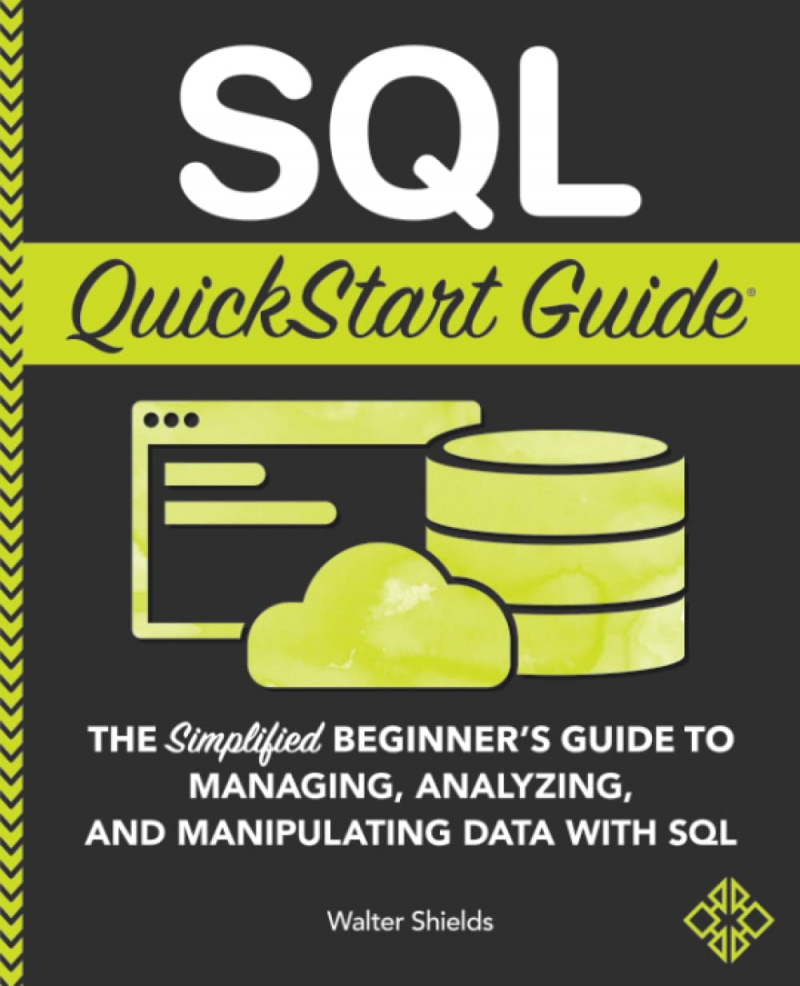
https://www.amazon.com/ 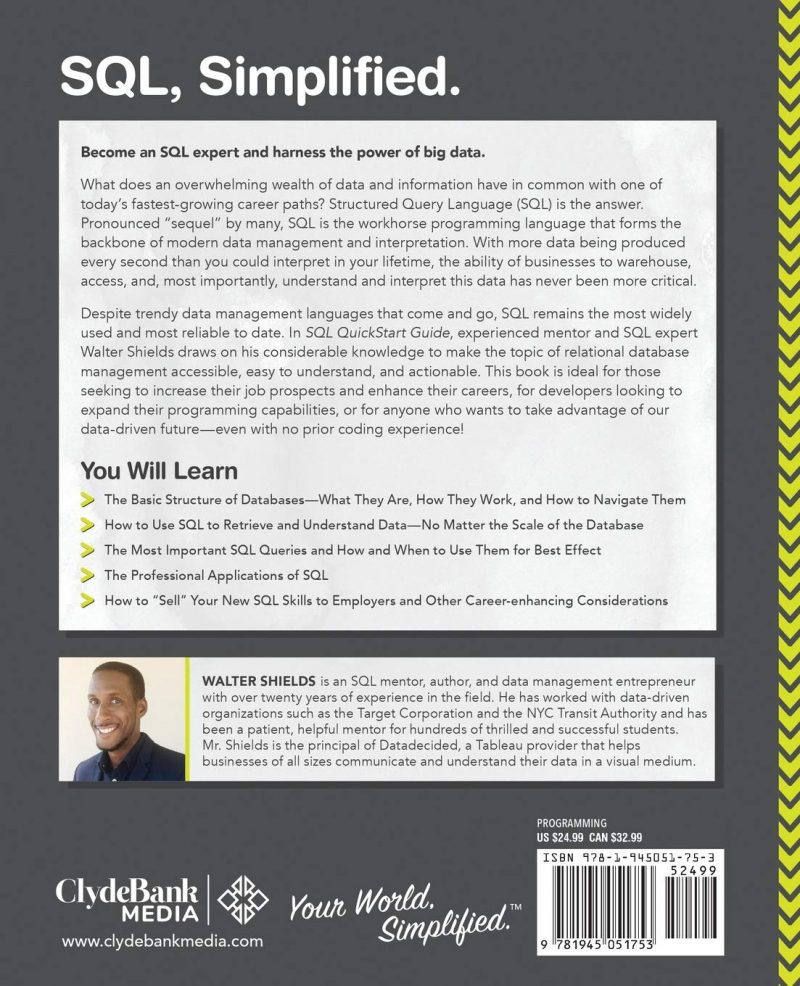
https://www.amazon.com/ -
ALEX J. GUTMAN, PhD, is an Accredited Professional Statistician®, Data Scientist, and Corporate Trainer. His professional interests are in statistics and machine learning, and he has worked as a Data Scientist for the Department of Defense and two Fortune 50 firms.
JORDAN GOLDMEIER is a Data Scientist, author, lecturer, and leader in the community. He has received the Microsoft Most Valuable Professional Award seven times and has taught analytics to members of the Pentagon and Fortune 500 organizations.
In Becoming a Data Head: How to Think, Speak, and Understand Data Science, Statistics, and Machine Learning, award-winning data scientists Alex Gutman and Jordan Goldmeier lift the lid on data science and provide you with the language and tools you need to talk about it critically.
You'll discover how to:
- Consider statistics and the impact that variety plays in your life and decision-making.
- Speak intelligently and ask pertinent questions regarding the facts and outcomes you face at work.
- Discover the truth about machine learning, text analytics, deep learning, and artificial intelligence.
- When working with and understanding data, avoid typical traps.
Becoming a Data Head is a comprehensive primer to data science in the workplace, covering everything from the personalities you'll encounter to the mathematics underlying the algorithms. The authors spent years digging through data to develop a book that was enjoyable, approachable, and effortlessly readable. Anyone with a passion for data science, statistics, and machine learning can become a Data Head. This book is for you if you are a business professional, engineer, executive, or aspiring data scientist.
Author: Jordan Goldmeier and Alex J. Gutman
Link to buy: https://www.amazon.com/Becoming-Data-Head-Understand-Statistics/dp/1119741742/
Ratings: 4.6 out of 5 stars (from 155 reviews)
Best Sellers Rank: #16,633 in Books
#3 in Database Storage & Design
#4 in Data Mining (Books)
#14 in Business Statistics
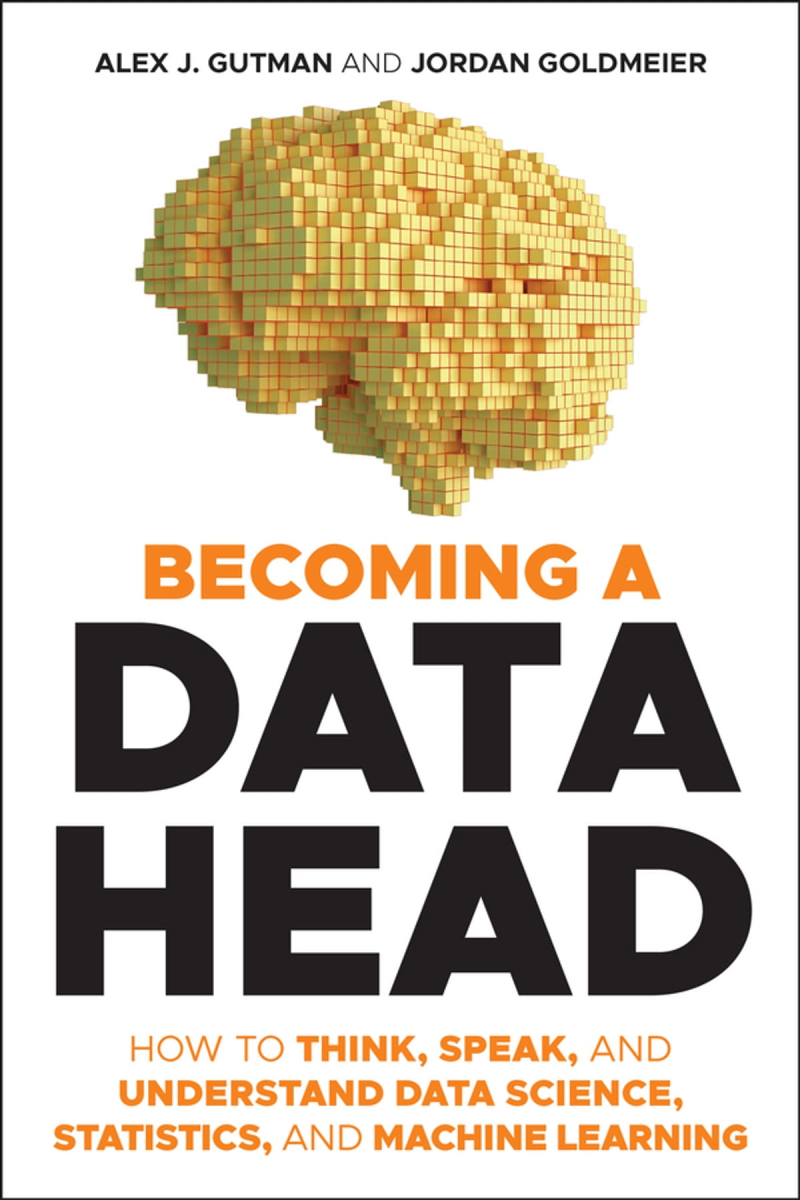
kobo.com 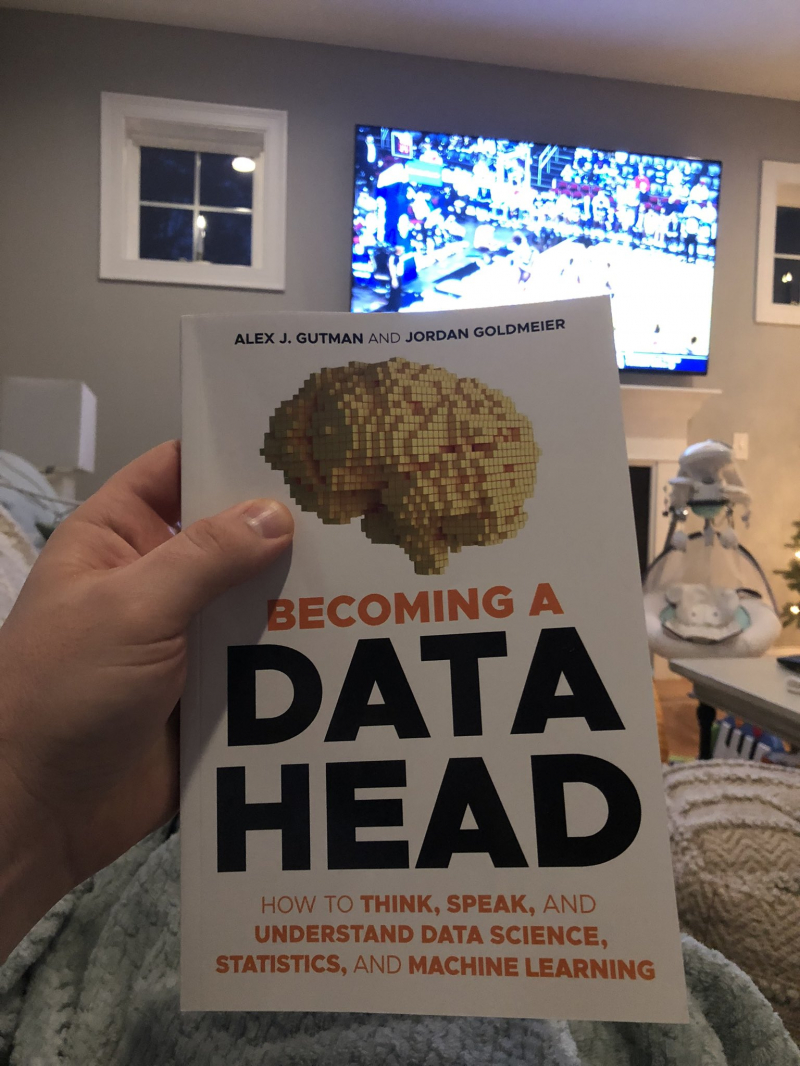
mobile.twitter.com -
Peter Bruce is the Founder and Chief Academic Officer of Statistics.com's Institute for Statistics Education, which offers over 80 statistics and analytics courses, roughly half of which are geared toward data scientists. Andrew Bruce, Amazon's Principal Research Scientist, has over 30 years of statistics and data science experience in university, government, and business. Peter Gedeck, Senior Data Scientist at Collaborative Drug Discovery, is an expert in developing machine learning algorithms to predict biological and physicochemical features of drug candidates.
Statistical procedures are an important aspect of data science, yet only a small percentage of data scientists have formal statistical training. Basic statistics courses and publications rarely approach the subject from a data science standpoint. This popular guide's second edition includes detailed Python examples, practical help on applying statistical approaches to data science, how to avoid their misuse, and advice on what's important and what's not.
Many data science resources include statistical approaches but do not provide a comprehensive statistical perspective. If you're familiar with the R or Python programming languages and have some experience with statistics, this brief reference bridges the gap in an easy-to-understand fashion.
Among the best books on data mining, Practical Statistics for Data Scientists will teach you:
- Why is exploratory data analysis such an important first step in data science?
- How random sampling can eliminate bias and produce a higher-quality dataset even with large amounts of data
- How experimental design concepts offer definitive answers to questions
- How to Estimate Outcomes and Detect Inconsistencies Using Regression
- The most important categorization strategies for determining which category a document belongs to
- Methods of statistical machine learning that "learn" from data
- Methods for extracting meaning from unlabeled data using unsupervised learning.
Author: Peter Bruce, Andrew Bruce and Peter Gedeck
Link to buy: https://www.amazon.com/Practical-Statistics-Data-Scientists-Essential/dp/149207294X/
Ratings: 4.6 out of 5 stars (from 593 reviews)
Best Sellers Rank: #17,487 in Books
#2 in Mathematical & Statistical Software
#2 in Data Warehousing (Books)
#3 in Mathematical Analysis (Books)
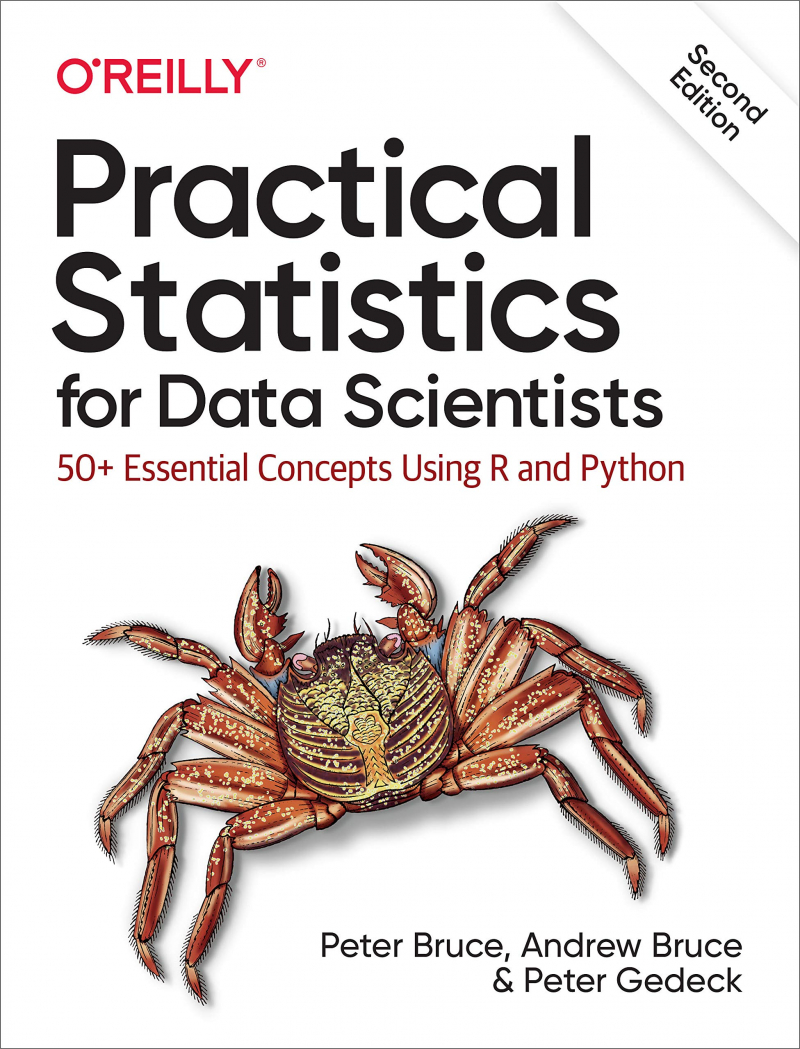
fado.vn 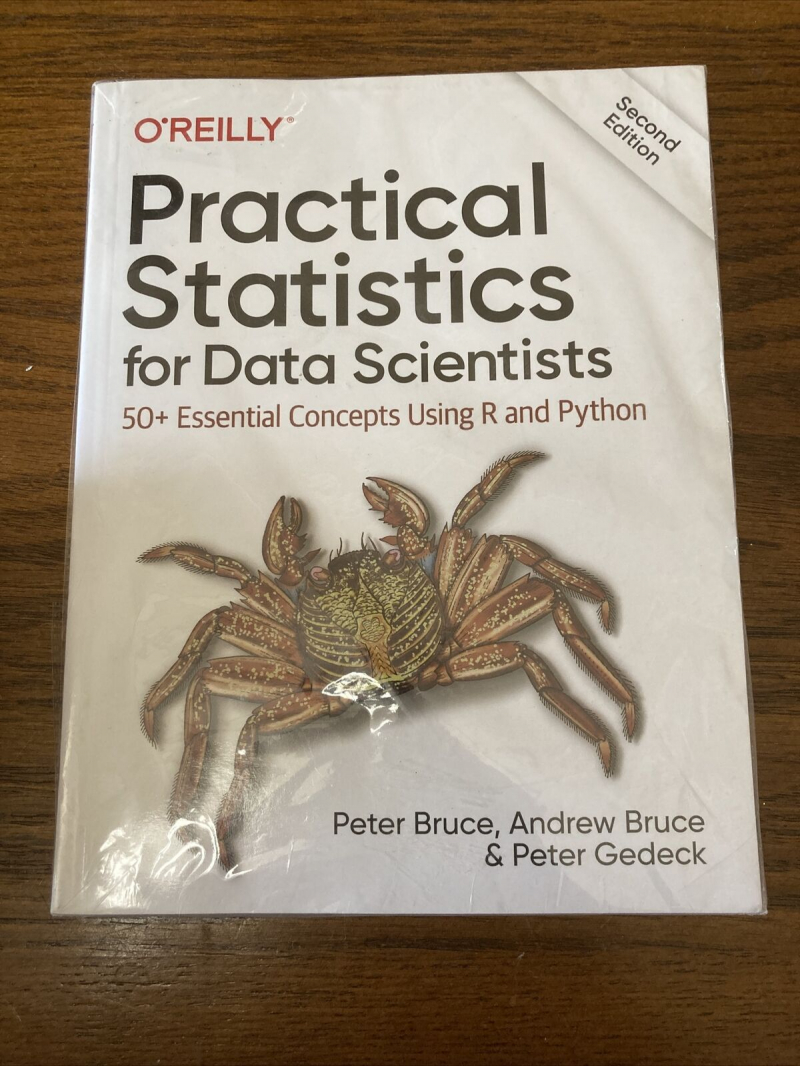
ebay.com -
Will Kurt is a Senior Data Scientist at Bombora who has been utilizing Bayesian statistics to solve real-world business challenges for over a decade. On his website, CountBayesie.com, he frequently posts about probability. Will wrote the book Get Programming with Haskell (Manning Publications)
Statistics and probability are becoming increasingly relevant in a wide range of occupations. However, many people utilize data in ways they don't even comprehend, which means they're not getting the most out of it. This will be changed by Bayesian Statistics the Fun Way.
Through clear explanations and engaging examples, this book will provide you with a thorough understanding of Bayesian statistics. To name a few, learn the likelihood of UFOs landing in your garden, how probable Han Solo is to survive a flight through an asteroid shower, how to win a conspiracy theory debate, and if a burglary was truly a burglary.
The author genuinely makes statistics entertaining to learn by employing these off-the-beaten-path examples. You'll also acquire practical skills such as how to:
- Determine your own level of uncertainty in a conclusion or belief
- Apply the Bayes theorem and understand its applications
- Determine the posterior, likelihood, and prior to ensure the accuracy of your findings
- Determine the range of your data by calculating distributions.
- Compare hypotheses and draw reliable conclusions from them.
When you have a pile of survey results and no idea what to do with them, turn to Bayesian Statistics the Fun Way to get the most out of your data.
Author: Will Kurt
Link to buy: https://www.amazon.com/Bayesian-Statistics-Fun-Will-Kurt/dp/1593279566/
Ratings: 4.6 out of 5 stars (from 445 reviews)
Best Sellers Rank: #41,152 in Books
#19 in Data Mining (Books)
#22 in Statistics (Books)
#22 in Database Storage & Design
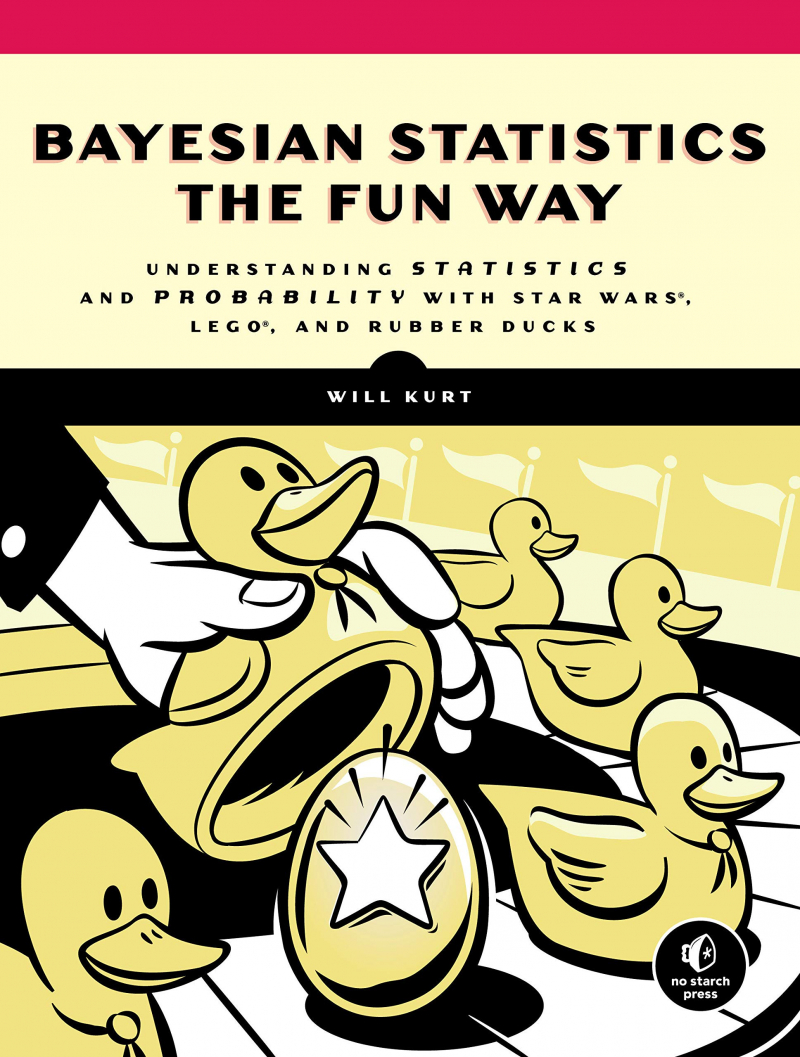
https://www.amazon.com/ 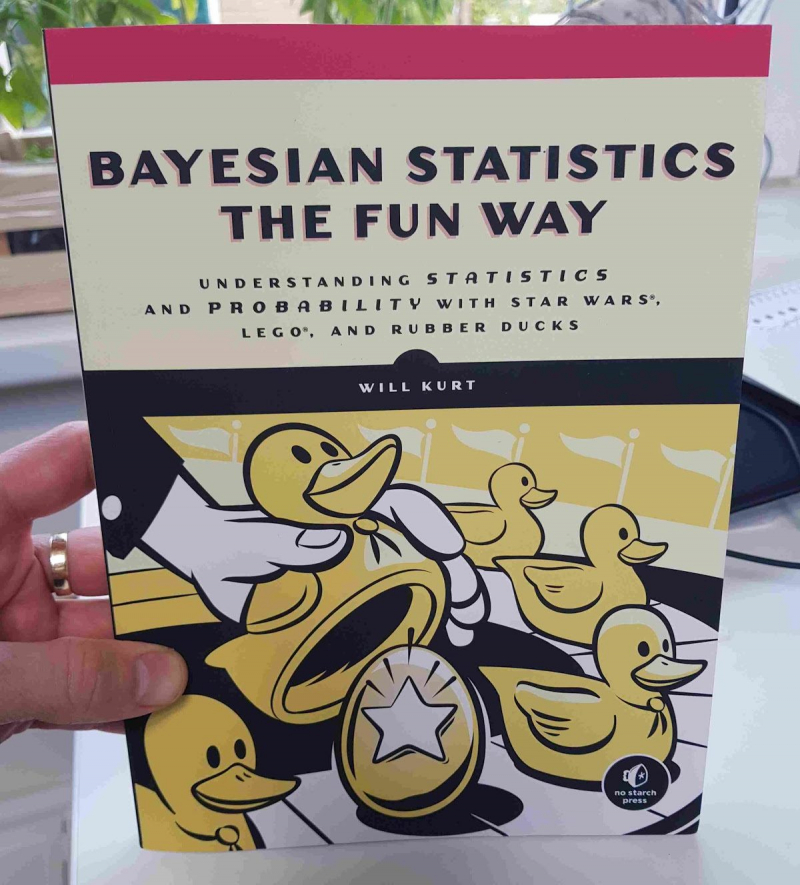
https://www.bayesianspectacles.org/ - Determine your own level of uncertainty in a conclusion or belief
-
Joe Reis is a business-minded data nerd with 20 years of experience in the data sector, with responsibilities ranging from statistical modeling, forecasting, machine learning, data engineering, data architecture, and practically everything in between. Matt Housley is a cloud specialist and data engineering consultant.
Data engineering has expanded fast over the last decade, leaving many software engineers, data scientists, and analysts in search of a complete understanding of the profession. Fundamentals of Data Engineering will teach you how to plan and create systems to meet the demands of your company and consumers by analyzing the finest technologies available using the data engineering lifecycle framework.
Authors Joe Reis and Matt Housley lead you through the data engineering lifecycle and demonstrate how to connect various cloud technologies to meet the needs of downstream data consumers. You'll learn how to apply data production, ingestion, orchestration, transformation, storage, and governance concepts that are essential in any data environment, independent of the underlying technology.
Among the best books on data mining, Fundamentals of Data Engineering will assist you in the following ways:
- Get a high-level understanding of the data engineering landscape.
- Analyze data engineering problems using an end-to-end best practices framework.
- When selecting data technology, architecture, and procedures, avoid marketing hype.
- Design and create a strong architecture using the data engineering lifecycle.
- Include data governance and security across the data engineering lifecycle.
Author: Matt Housley and Joe Reis
Link to buy: https://www.amazon.com/Fundamentals-Data-Engineering-Joe-Reis-ebook/dp/B0B4VH4T37/
Best Sellers Rank: #43,373 in Kindle Store
#2 in Database Management Systems
#2 in Data Mining (Kindle Store)
#3 in Data Modeling & Design (Kindle Store)
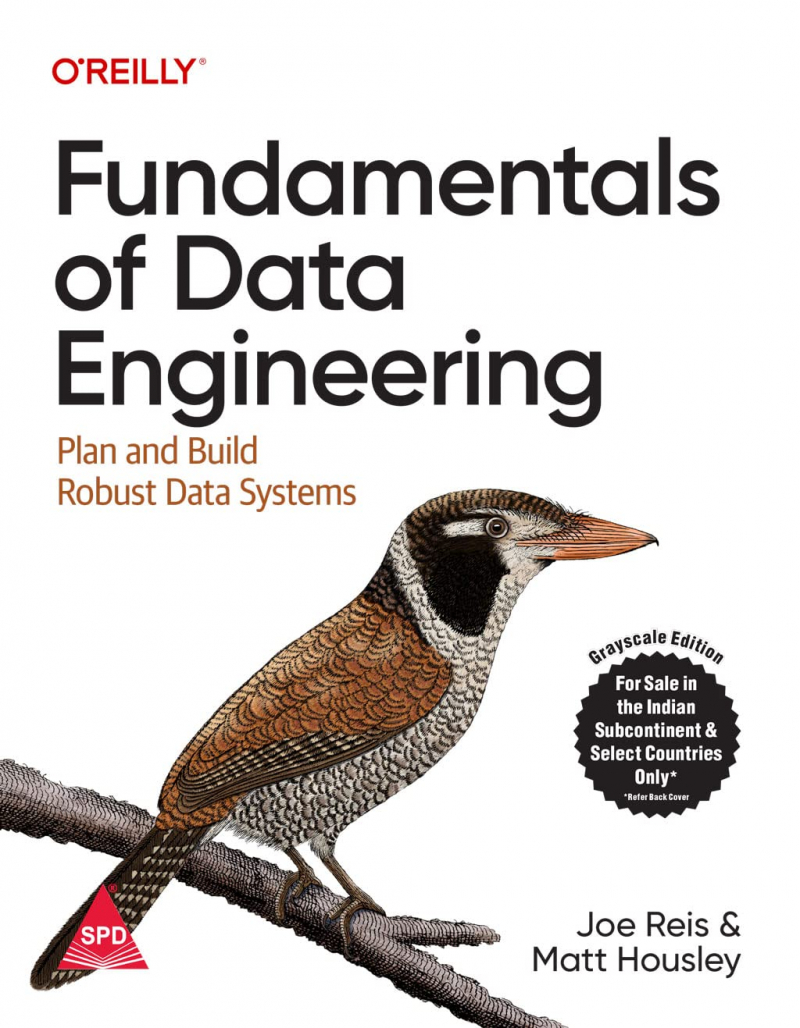
amazon.in 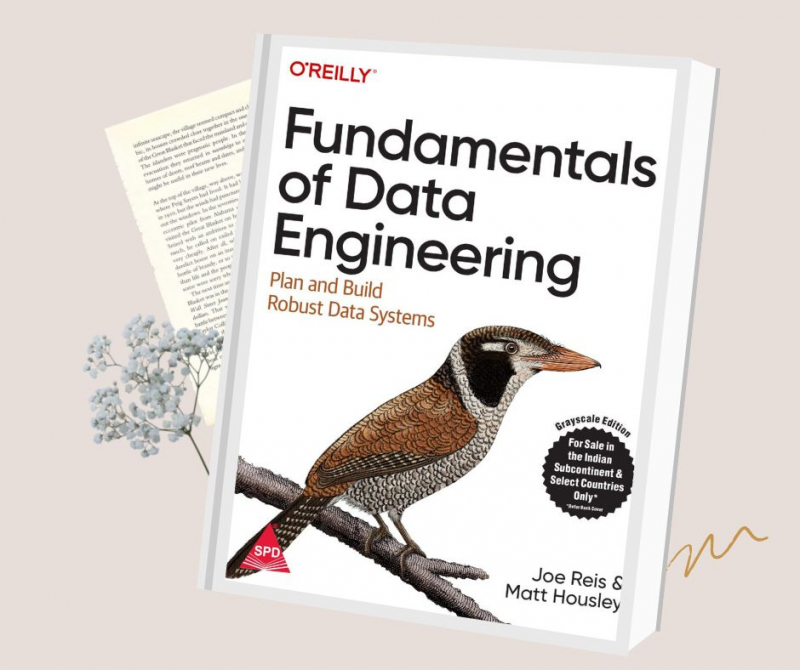
amazon.in -
Alex is a data infrastructure engineer who is interested in storage, distributed systems, and algorithms. He is an Apache Cassandra committer and PMC member.
Understanding the internals of a database is critical for selecting, using, and maintaining it. However, with so many distributed databases and technologies available today, it can be difficult to comprehend what they each offer and how they differ. Alex Petrov walks developers through the ideas behind current database and storage engine internals in this practical guide.
Throughout Database Internals, you'll look at information from books, articles, blog posts, and the source code of multiple open source databases. Parts one and two contain a list of these resources. The most significant differences between many current databases can be found in subsystems that control how storage is arranged and data is dispersed.
Database Internals investigates:
- Storage engines: Investigate storage classification and taxonomy, as well as B-Tree-based and immutable Log storage engines. Storage building blocks: Structured storage engines, with differences and use-cases for each
- Storage building blocks: Learn how to organize database files for efficient storage by utilizing auxiliary data structures such as Page Cache, Buffer Pool, and Write-Ahead Log.
- Distributed systems: Learn how to connect nodes and processes and create complicated communication patterns step by step.
- Database clusters: Which modern database consistency models are routinely utilized, and how can distributed storage systems accomplish consistency?
Author: Alex Petrov
Link to buy: https://www.amazon.com/Database-Internals-Deep-Distributed-Systems/dp/1492040347/
Ratings: 4.7 out of 5 stars (from 300 reviews)
Best Sellers Rank: #28,555 in Books
#4 in Management Information Systems
#4 in Data Warehousing (Books)
#6 in Desktop Database Books

fado.vn 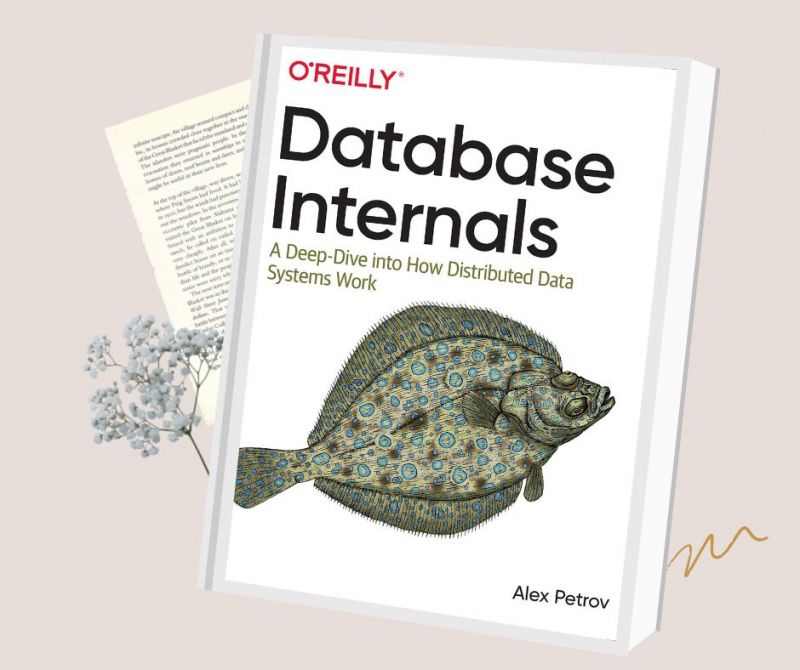
fado.vn -
Joel Grus works at the Allen Institute for Artificial Intelligence as a research engineer. He previously worked at Google as a software engineer and at various startups as a data scientist. He resides in Seattle and attends data science happy hours on a regular basis.
To truly grasp data science, you must not only master the tools (data science libraries, frameworks, modules, and toolkits), but also the ideas and principles that underpin them. This second edition of Data Science from Scratch, updated for Python 3.6, demonstrates how these tools and techniques function by implementing them from scratch.
If you have a mathematical aptitude and some programming abilities, author Joel Grus will help you become acquainted with the arithmetic and statistics at the heart of data science, as well as the hacking skills required to get started as a data scientist. This updated book shows you how to locate the diamonds in today's jumbled overflow of data, with new material on deep learning, statistics, and natural language processing.
- Take a Python crash course.
- Learn the fundamentals of linear algebra, statistics, and probability, as well as how and when they are applied in data science.
- Data collection, exploration, cleaning, munging, and manipulation
- Explore the principles of machine learning.
- Models such as k-nearest neighbors, Nave Bayes, linear and logistic regression, decision trees, neural networks, and clustering should be implemented.
- Investigate recommender systems, natural language processing, network analysis, MapReduce, and database technologies.
Author: Joel Grus
Link to buy: https://www.amazon.com/Data-Science-Scratch-Principles-Python/dp/1492041130/
Ratings: 4.4 out of 5 stars (from 568 reviews)
Best Sellers Rank: #27,764 in Books
#4 in Enterprise Data Computing
#5 in Computer Algorithms
#5 in Computer Programming Structured Design
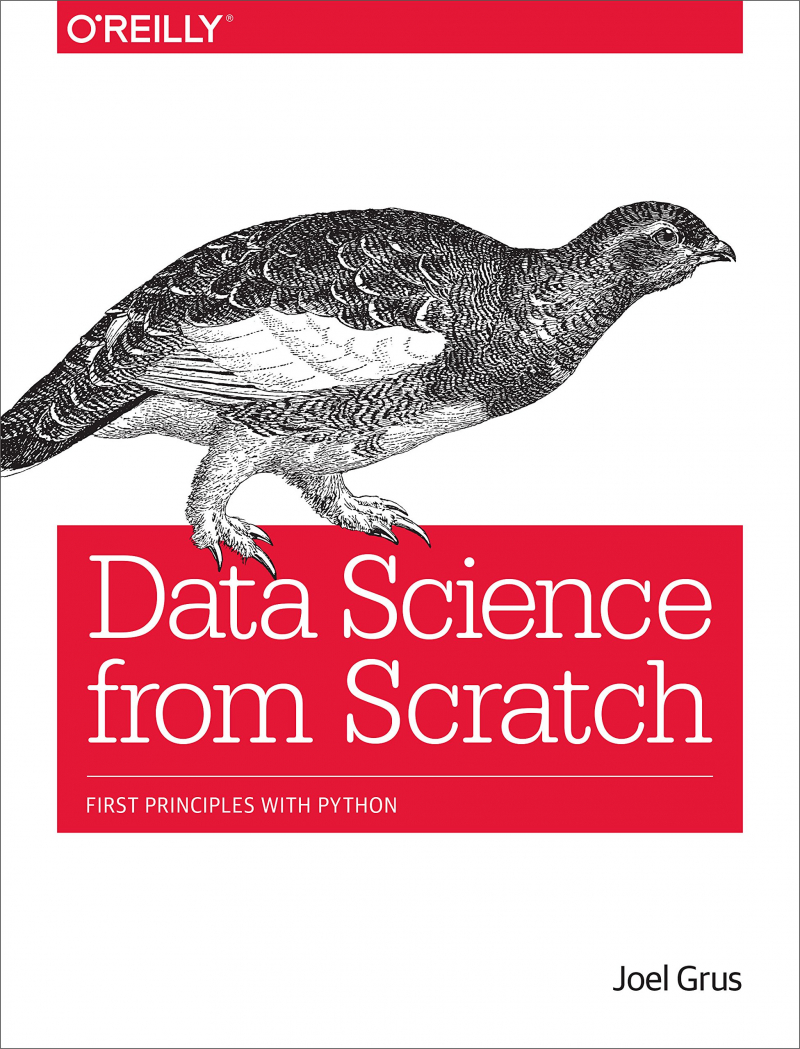
amazon.co.uk 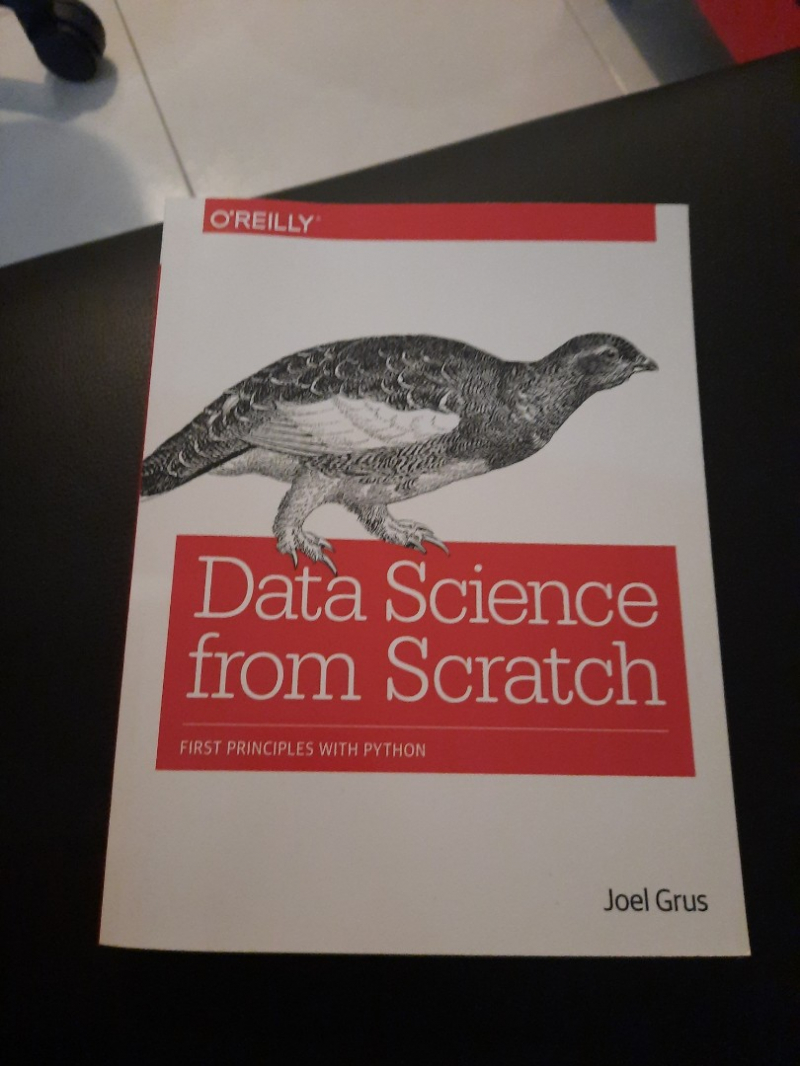
carousell.sg -
Stanford University statistics professors Trevor Hastie, Robert Tibshirani, and Jerome Friedman They are well-known researchers in this field: Hastie and Tibshirani created generalized additive models and produced a bestselling book with the same name. Hastie invented main curves and surfaces and co-developed most of the statistical modeling tools and environment in R/S-PLUS. Tibshirani invented the lasso and is co-author of the best-selling An Introduction to Bootstrap. Friedman co-invented numerous data-mining technologies, including CART, MARS, projection pursuit, and gradient boosting.
In a shared conceptual framework, The Elements of Statistical Learning presents essential ideas in a number of professions such as medical, biology, finance, and marketing. Despite the statistical approach, the emphasis is on concepts rather than mathematics. Many examples are provided, with extensive use of color visuals. It's an excellent resource for statisticians and anyone else interested in data mining in research or industry. The book covers a wide range of topics, from supervised learning (prediction) to unsupervised learning. Among the several subjects covered are neural networks, support vector machines, classification trees, and boosting, which is the first complete coverage of this topic in any book.
Many areas not included in the original are covered in this important new edition, including graphical models, random forests, ensemble methods, least angle regression & path algorithms for the lasso, non-negative matrix factorisation, and spectral clustering. There is also a chapter on methods for "wide'' data (p bigger than n), covering multiple testing and false discovery rates, is also included. The book is among the best books on data mining.
Author: Trevor Hastie, Robert Tibshirani and Jerome Friedman
Link to buy: https://www.amazon.com/Elements-Statistical-Learning-Prediction-Statistics/dp/0387848576/
Ratings: 4.6 out of 5 stars (from 978 reviews)
Best Sellers Rank: #33,290 in Books
#3 in Bioinformatics (Books)
#10 in Statistics (Books)
#10 in Artificial Intelligence (Books)
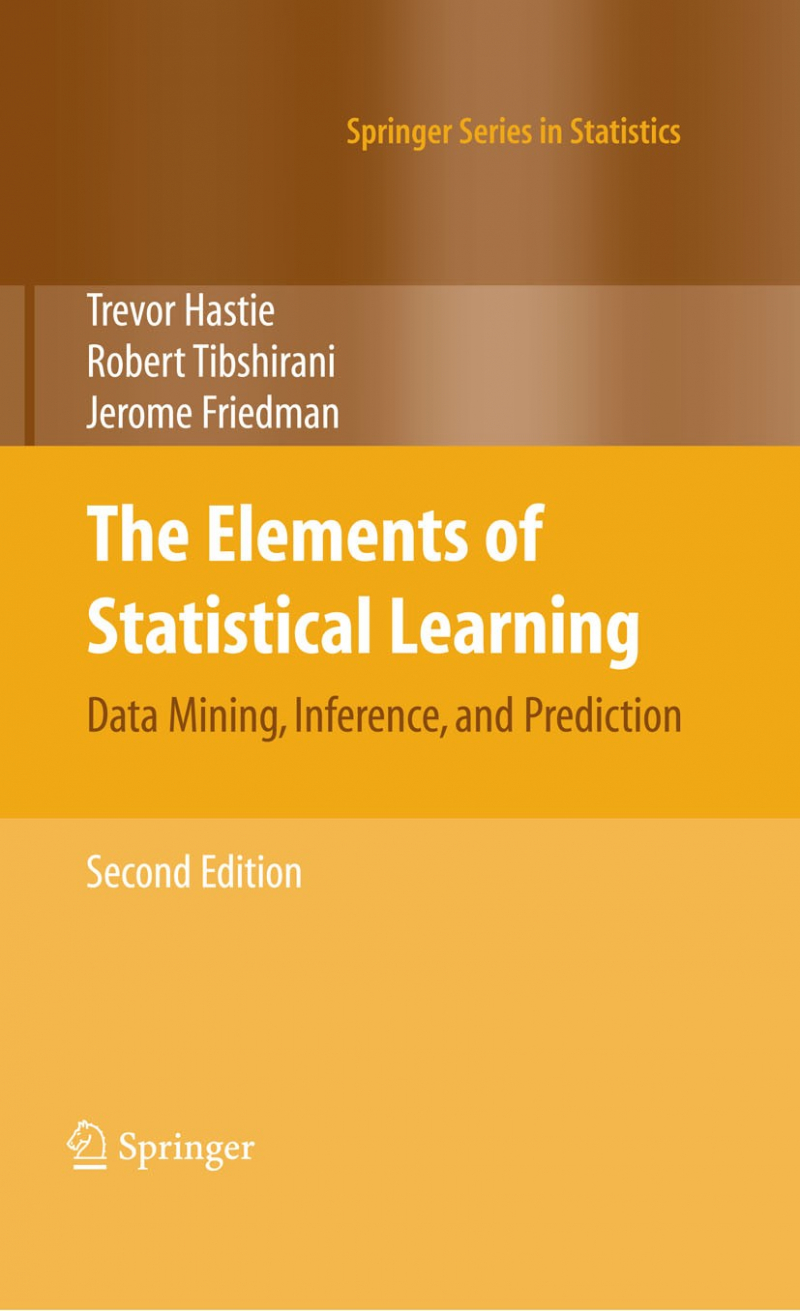
link.springer.com' 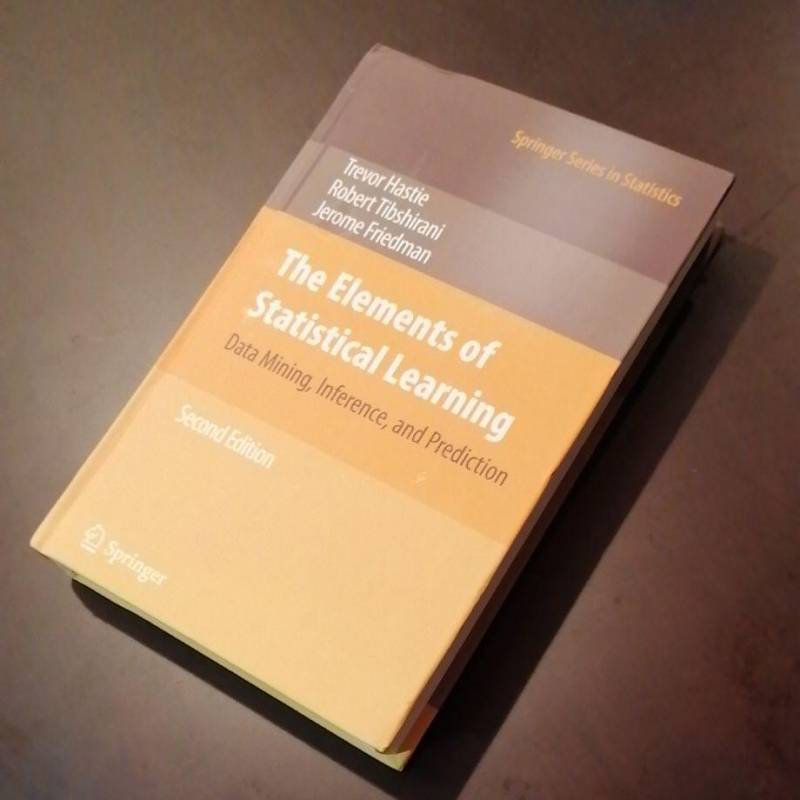
buyee.jp -
Alan Beaulieu has over 25 years of experience designing, creating, and implementing specialized database applications. He is the author of the O'Reilly books Learning SQL and Mastering Oracle SQL, as well as an online SQL course for the University of California. He now owns his own consulting firm that specializes in database design and development in the financial services and telecommunications industries. Alan graduated from Cornell University's School of Engineering with a Bachelor of Science in Operations Research.
As data flows into your organization, you must put it to use as soon as possible—and SQL is the greatest tool for the job. Author Alan Beaulieu's latest edition of Learning SQL assists developers in learning SQL essentials for developing database applications, performing administrative tasks, and generating reports. New chapters cover SQL and big data, analytic functions, and working with extremely large databases.
Using numerous pictures and annotated examples, each chapter provides a self-contained education on a major SQL subject or method. Exercises allow you to put what you've learned into practice. SQL knowledge is required for data interaction. With Learning SQL, you'll quickly learn how to put this language's strength and versatility to use.
- Quickly learn SQL fundamentals and a few advanced features.
- SQL data statements are used to create, manipulate, and retrieve data.
- SQL schema statements are used to create database objects such as tables, indexes, and constraints.
- Discover how datasets interact with searches and the significance of subqueries.
- Use SQL's built-in functions to convert and manipulate data, and conditional logic in data statements.
Author: Alan Beaulieu
Link to buy: https://www.amazon.com/Learning-SQL-Generate-Manipulate-Retrieve/dp/1492057614/
Ratings: 4.6 out of 5 stars (from 324 reviews)
Best Sellers Rank: #38,720 in Books
#5 in MySQL Guides
#6 in Data Warehousing (Books)
#6 in SQL
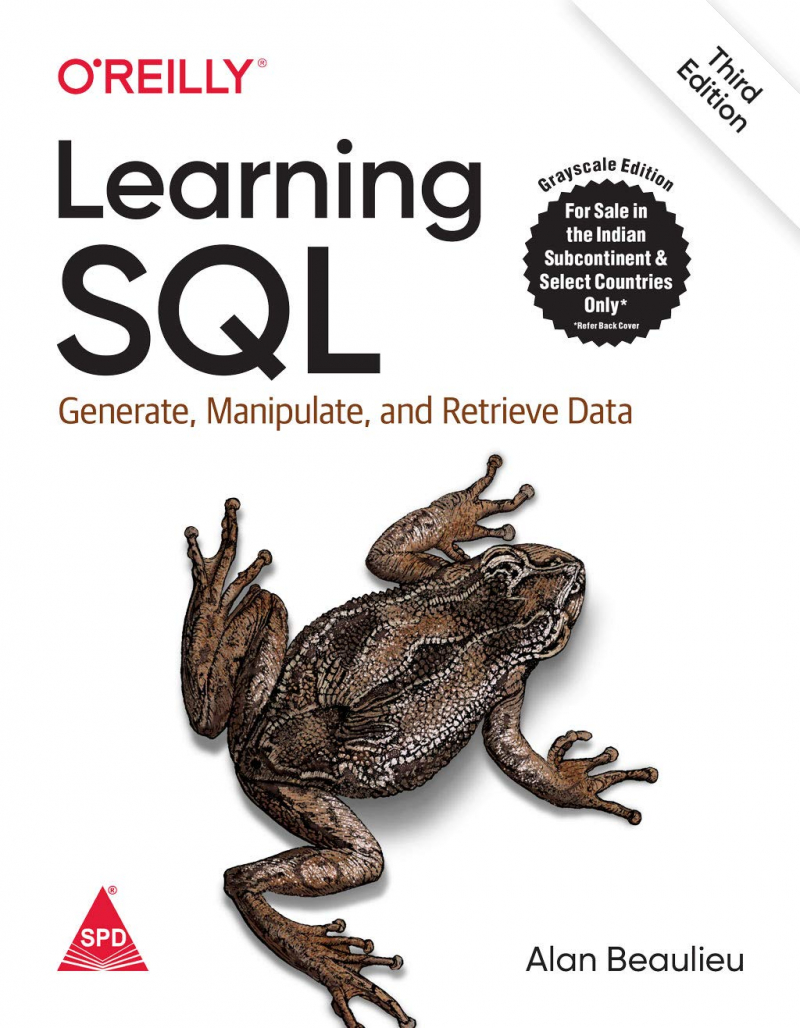
amazon.in 
lazada.com.my -
Foster Provost is an Associate Professor and NEC Faculty Fellow at New York University Stern School of Business, where he teaches in the MBA, Business Analytics, and Data Science programs. His award-winning study is widely read and cited. Prof. Provost has co-founded several successful data science for marketing enterprises.
Tom Fawcett has a Ph.D. in machine learning and has spent more than two decades working in industrial R&D for businesses such as GTE Laboratories, NYNEX/Verizon Labs, and HP Labs. His published work has become required reading in the field of data science.
Data Science for Business, written by renowned data science specialists Foster Provost and Tom Fawcett, covers the fundamental principles of data science and leads you through the "data-analytic thinking" required for extracting usable knowledge and business value from the data you collect. This guide will also help you comprehend the various data-mining strategies that are currently in use.
Among the best books on data mining, Data Science for Business is based on an MBA course Provost has taught at New York University for the past ten years, and it uses real-world business situations to illustrate these principles. Not only will you learn how to increase communication between business stakeholders and data scientists, but you'll also learn how to participate intelligently in your company's data science projects. You'll also learn how to think data-analytically and fully understand how data science methodologies may help businesses make decisions.
- Learn where data science fits in your organization and how you can use it to gain a competitive advantage.
- Consider data to be a company asset that requires deliberate investment in order to generate significant value.
- Approaching business issues data-analytically, utilizing the data-mining method to get useful data in the most appropriate manner
- Learn general principles for obtaining knowledge from data.
- When interviewing data science job prospects, use data science principles.
Author: Tom Fawcett and Foster Provost
Link to buy: https://www.amazon.com/Data-Science-Business-Data-Analytic-Thinking/dp/1449361323/
Ratings: 4.5 out of 5 stars (from 932 reviews)
Best Sellers Rank: #38,479 in Books
#9 in Business Mathematics
#13 in Data Modeling & Design (Books)
#18 in Data Mining (Books)
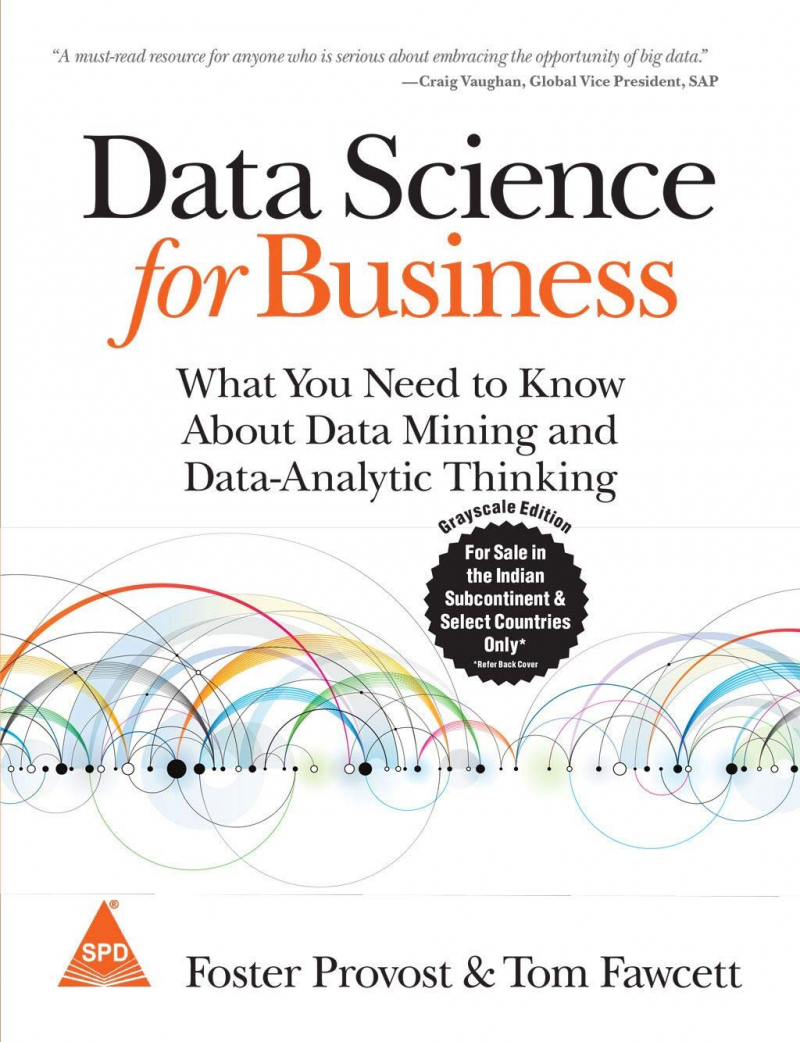
amazon.in 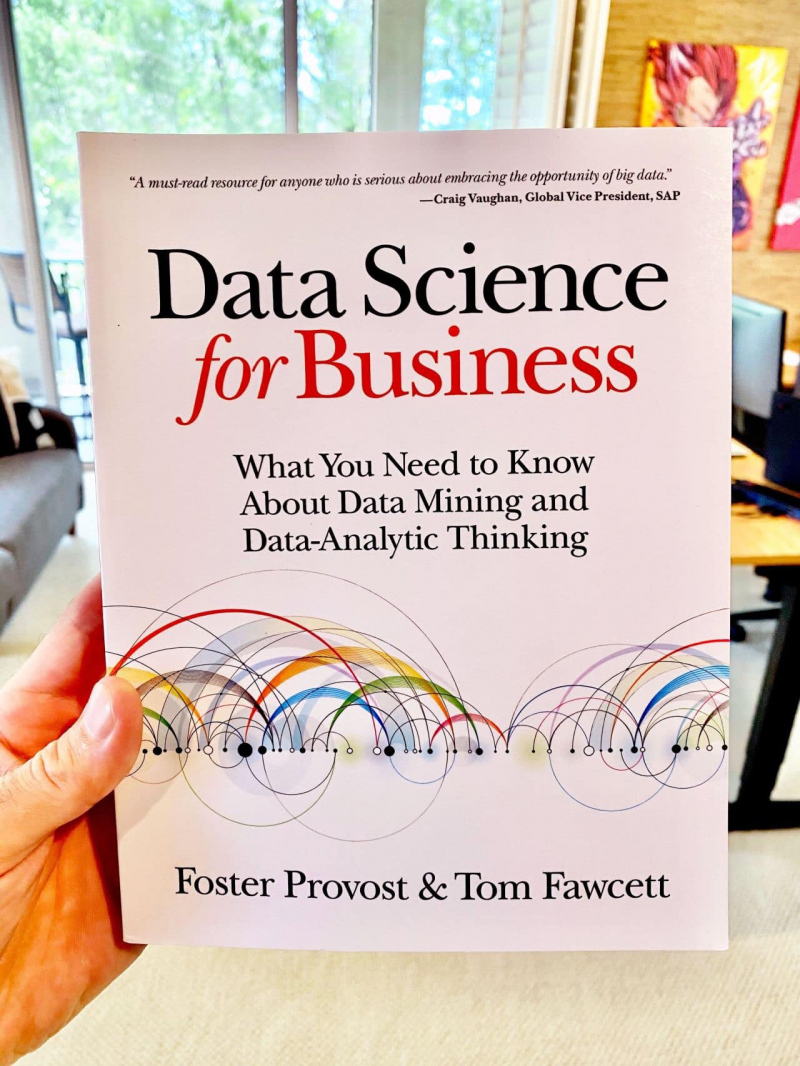
Photo: Smart Fingers's Facebook














